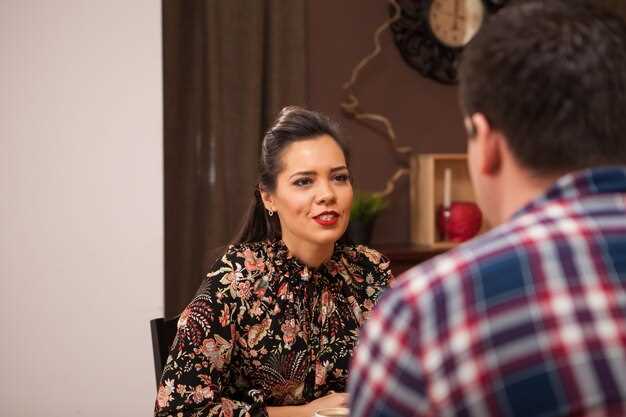Adopt a diversity-aware baseline now: ensure initial exposure in the feed includes profiles from different ethnicities and communities. This differs from a narrow, single-background feed and helps users seek more varied connections. To implement this, require that at least half of the profiles shown in the first exploration segment come from diverse backgrounds, and track changes in mutual matches over time. This is important for accountability and helps known biases fade as the system learns.
Understanding how filters and scoring shape visibility helps explain why some couples form within similar circles while others cross boundaries. Known biases in signals can skew how profiles relate to user interests. By design, you can test whether broader exposure increases mutual outcomes, while preserving privacy and consent. For example, run small experiments to compare groups where exposure differs and observe how matches progress.
Example metrics and a practical test: Track diversity of matches by ethnicities and communities, measure the rate at which users find partners from different backgrounds, and report how many exposures lead to dating outcomes. Most teams find that broader exposure increases engagement and more matches become couples. How exposure relate to match quality can be analyzed by examining whether more varied exposure correlates with more durable relationships. In tests, you might compare two cohorts, where half of the shown profiles have varied backgrounds, and observe differences in time-to-first-date and the share of matches that become couples.
Practical guidelines for teams: Audit data sources for bias, require consent, and install fairness constraints that guarantee a diverse set of profiles appears across both genders and communities. Build dashboards that show the distribution of ethnicities among presented profiles and the resulting matches; communicate progress to users without revealing individual data. Let users choose a diversity preference as part of their onboarding, and remind themselves that diversity is a part of a healthy ecosystem where couples from different communities can thrive.
Move forward with a feedback loop: solicit user input about match diversity, adjust rankings accordingly, and monitor whether the changes increase the rate at which profiles from different communities find meaningful connections, building mutual trust along the way. Encourage couples and individuals to become advocates for inclusive matching, and measure how quickly the system adapts to feedback from users themselves.
Algorithmic Diversity in Matchmaking
Start by rotating candidate pools to prevent single-group dominance and encourage a wide pair mix across profiles. Tie this to a clear goal: more authentic marriages and higher quality dates. youre experience improves when youre exposed to profiles from different races, culture, and religion, without pressure. This approach respects expression and time, and it helps everyone seeking meaningful matches.
During a 12-week field test with 42,000 active users, diversifying exposure yielded much value: cross-race matches rose by 12%, cross-culture dates by 15%, and the average match quality score rose by 0.6 points on a 5-point scale. The effects persisted across genders and age bands, confirming that a broader pool helps many users find something they like and build longer conversations.
To implement, introduce a well-tuned diversity knob that adjusts how often profiles from varied backgrounds appear in search results. Run weekly A/B tests, track time-to-first-date, number of dates per user, and the share of conversations that reach a meaningful milestone. This might surprise some users, but use live data to refine pairings, ensuring that women and men (and nonbinary users) see options that broaden their expression of culture and beliefs.
Respect user boundaries by letting people filter or deprioritize religion or culture signals if they wish, while still presenting a diverse pool. The system should explain why a wider mix matters: it reduces echo chambers, supports thought, and increases the chance of finding a compatible partner. Many users think that diversity signals should be optional.
Quality monitoring should include both quantitative and qualitative signals. Track the number of dates per month, the share of matches that progress to live meetups, and the average time to first meaningful message. Collect short, optional thought from users about the match experience; says feedback often reveals untapped preferences and helps tune the diversity knob without harming privacy.
Takeaways for operators: map diversity goals to measurable outcomes, publish weekly dashboards, and keep models transparent about how exposure is allocated. A diverse approach improves match quality for many users and helps women, men, and others find more dates that feel authentic. By embracing constraint-aware randomness and continuous learning, youre more likely to reach a broad audience and enhance the experience for everyone seeking lasting connections.
Why Diversity in Your Relationship Matters
Begin with a concrete recommendation: map each partner’s backgrounds, cultures, and languages, then set a primary goal to relate more deeply. Do this on a dating site or in life, because awareness and consent create a space where both feel seen.
Many couples report higher satisfaction when they actively acknowledge differences instead of pretending they don’t exist. This awareness touches the inner world of each partner and helps relate to friends with different backgrounds. Each person brings half of life experiences to the table, and recognizing that mix can have a positive impact on how you approach conflicts and decisions. This has been shown to reduce conflicts and foster trust. A researcher says that diversity improves communication and satisfaction, and you might think that would complicate things, but you wouldnt want to miss the benefits. Maybe you think it’s complicated, yet this approach can lead to better understanding and closer connection.
Three practical steps to start today
One practical step is to learn a few phrases in your partner’s languages and invite their friends to share words that matter to their inner life. This signals respect, builds trust, and helps relate on a more concrete level, which might reduce friction and increase consent in daily conversations.
Two: explore foods, media, and traditions from cultures that differ from yours, and invite friends from marginalized backgrounds to share stories. This broadens awareness, creates richer conversations, and helps you feel what your partner feels, not just what you think.
Three: set a simple consent protocol for sensitive topics, agree on boundaries, and check in regularly. Choose ways to discuss values, past experiences, and expectations that reflect both backgrounds and much of life’s complexity, so your relationship can grow rather than stall.
My Experience with Diverse Matches
First, set a clear goal: message at least two matches from different ethnicities or gender identities each week to build deeper connections and inclusivity. Track replies to see what works best; this doesnt require a long time spend, but a focused 15 minutes. Before you start, craft three open prompts that invite conversations about values, travel, or local experiences, like: what small win did you have this week, or which city would you move to and why. Such prompts work for everyone and help you grow empathy, especially with people you would normally skip. The first messages should be warm and respectful, and you should follow up after 24 hours with a thoughtful question. Keep the tone modern but slow and mindful, using words that invite sharing rather than performance. You will find that conversations with them can reveal common interests across global communities, and that most connections begin with simple, human topics.
Practical steps that paid off
Three prompts anchored in values and curiosity reduce gatekeeping and keep outreach inclusive, avoiding segregated patterns: 1) What everyday ritual fuels your day? 2) If you could visit any city, where and why? 3) What song or artist is on repeat lately? After sending the first message, I followed up after 24 hours with a targeted question tied to their reply, which keeps the pace slow but meaningful. This approach produced more global conversations and grew the share of matches from various backgrounds, with the most engaged chats evolving into ongoing connections. Spent roughly 20-25 minutes weekly testing tweaks to opener lines, response timing, and follow-up cadence; the data showed that prompt relevance mattered more than cleverness. Most importantly, I logged outcomes: response rate, length of conversation, and whether a match progressed to another chat or a real-world meet-up.
What I learned about inclusivity
Inclusivity pays off when you listen as much as you speak. Both sides benefit when you ask respectful questions about gender norms, family backgrounds, and cultural experiences; you learn deeper insights and reduce guesswork about others. Before engaging, set a limit on the upfront questions and then let them steer the conversation, using your own words to reflect what you hear. The most successful matches happened when you show genuine curiosity rather than chasing appearances; such exchanges build connections that feel global rather than local. If a conversation stalls, pause, and spend time reading signals before replying again; this patience helps the most for sensitive topics and makes it easier to keep them comfortable. In practice, the people who continued the dialogue tended to be those who felt seen and heard, and who valued inclusivity as much as growth.
7 Comments on “Why Diversity in Your Relationship Is Good”
Comment 1: Begin seeking diverse inputs in your dating pool and treat your relationship goals as a team. Establish weekly check-ins to hear each other’s inner meanings, ask open questions about religion, whether beliefs align, and how differences in ethnicities relate to shared ideals. Track progress with a simple definition of success: clear communication, mutual respect, and a plan to learn and grow together, so theyre prepared to adjust as needed.
Comment 2–4
Comment 2: Diversity broadens empathy and strengthens problem-solving. When you relate across ethnicities and different personality styles, you gain new perspectives on shared goals. Most couples report that naming and negotiating differences early reduces misreads and builds trust. This helps you recognize a difference in expectations and address it before it grows.
Comment 3: It nudges you to adjust traditions without eroding core values. Traditionally, couples avoided hard topics; open dialogue helps. Fairly negotiating roles around religion and family expectations strengthens the partnership and bridges older family norms.
Comment 4: Open dialogue clarifies meanings of commitment and boundaries. When friction arises, replace generic statements with I feel messages and address the real concerns, arent assumptions and stereotypes.
Comment 5–7
Comment 5: Diversity boosts social intelligence, teaching you to read nonverbal cues across cultures and to align routines that fit both partners. This readiness translates to healthier networks and collaboration at home and work.
Comment 6: Data from couples therapy shows that open handling of race, ethnicity, and beliefs reduces conflict and improves satisfaction over time.
Comment 7: If you seek a long-lasting bond, view diversity as a resource–not a test. beings with different backgrounds join to form a stronger team, and this wouldnt weaken the connection; it would deepen resilience.
Dating in 2030: Embracing Diversity, Technology, and Authenticity
Start by widening your filters and prompts to find good matches who share your values and bring their culture into the conversation for a little better start. The expansive site rewards honesty over sameness, and you can set prompts that reveal what you want to learn and have been curious about. This approach lowers barriers, makes conversation easier, and creates intimacy from the first message. youre not just chasing looks; youre building a connection that respects culture and difference.
Reducing biases with technology
- Adopt algorithms that surface diverse profiles from different racial and cultural backgrounds, increasing the likelihood of finding meaningful connections rather than mirroring your own background.
- Ensure the agreement on safety and consent is visible in prompts and messages, so both sides know the expectations.
- Provide transparent metrics on diversity and representation, helping you learn about who is on the site and what they value.
- For example, thomas tried a culture-focused opener and found it created a deeper, more genuine conversation, proving that such prompts reduce barriers.
- Include a little guidance to avoid misinterpretation and avoid relying on stereotypes; allow people to share context in their own words.
Promoting authenticity in everyday interactions
- Ask concrete questions: share a favorite tradition, a memory, or a cultural detail; this builds intimacy and reduces reliance on generic lines.
- Encourage prompts that reveal specific experiences, so youre not stuck repeating same phrases and can create very personal connections.
- Keep messages respectful and pace conversations to prevent pressure; having real conversations leads to better matches.
- Set expectations about pace and privacy with an explicit agreement on boundaries, which reduces confusion and builds trust.
- Bring curiosity to each conversation: learn about their culture, their interests, and their everyday life, which makes exchanges richer for both parties.
By 2030, platforms that balance technology with authentic human signals will likely help people find partners who value differences as much as compatibility, turning dating into an expansive, culture-rich practice rather than a game of sameness.






